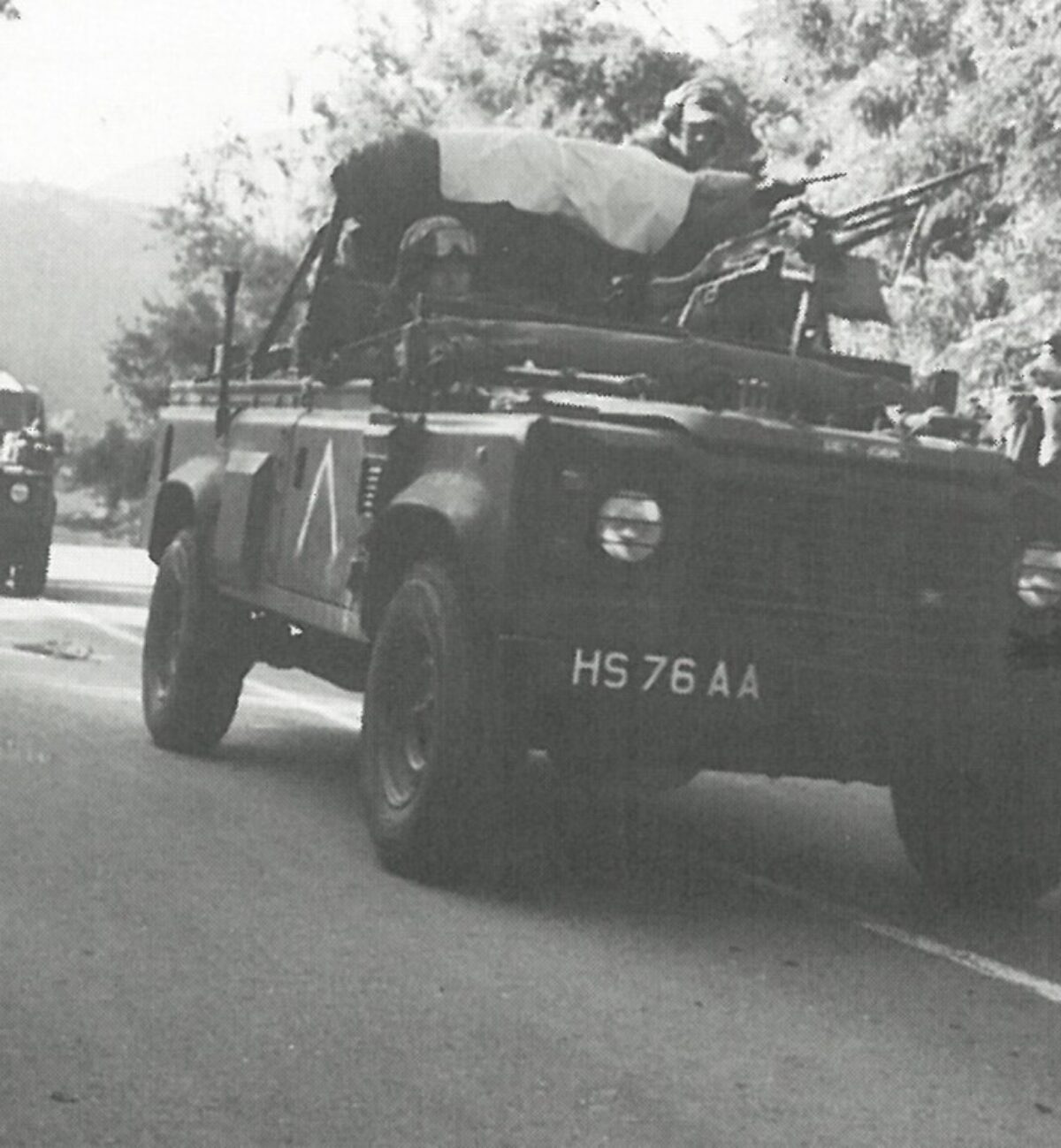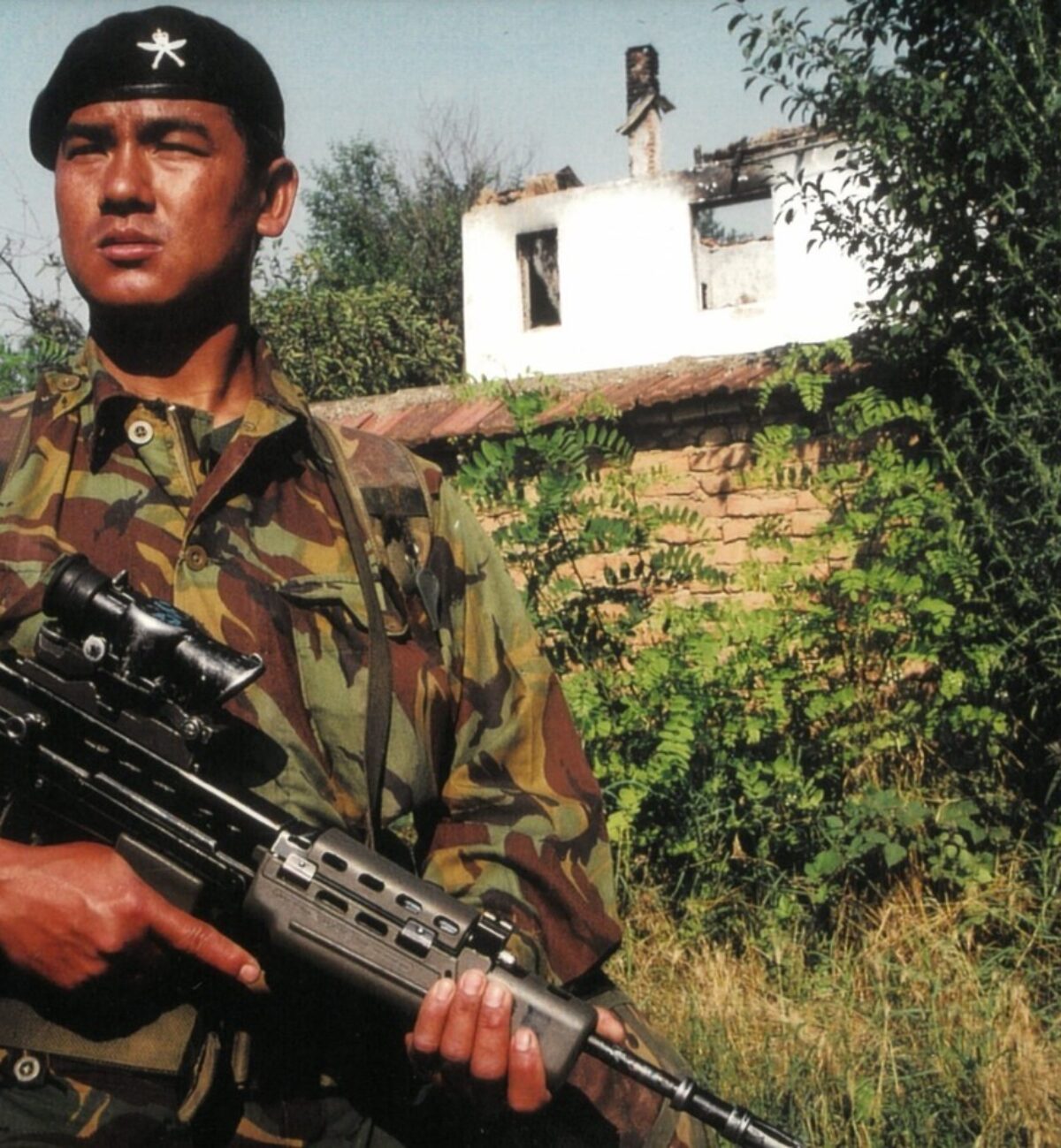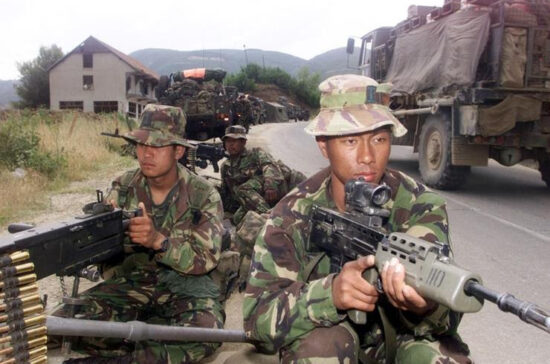June 2024 marked 25 years since units from the Brigade of Gurkhas deployed on Operation AGRICOLA, a peacekeeping operation to the war-torn Balkan state of Kosovo. Despite being a brief deployment, Operation AGRICOLA is significant for the modern Brigade. Throughout the 1990s the Brigade of Gurkhas underwent significant reduction and reorganisation, including the formation of The Royal Gurkha Rifles (RGR).
The Yugoslav and Kosovo Wars
The Kosovo War (28 February 1998 to 11 June 1999) was fought against the background of the wider Yugoslav Wars. This conflict erupted in 1991 when the fall of the Soviet Union led several Balkan states within the former Yugoslavia to vie for independence. The resulting conflicts were brutal as tensions between different cultural groups in former Yugoslavia caused widespread ethnic cleansing, which included forced deportations and mass killings.
From 1995, NATO deployed to stem the growing humanitarian crisis, negotiating ceasefires and deploying a multinational Implementation Force (IFOR) to Bosnia to ensure peace and aid in reconstruction. The British contribution to IFOR, Operation RESOLUTE, included elements of 3rd Battalion, Royal Gurkha Rifles (3RGR). 3RGR became the first battalion from RGR to be operationally deployed since the regiment’s formation a year earlier. In 1996, IFOR was replaced by Stabilisation Force (SFOR) which continued the work of its predecessor.
Despite NATOs successes in restoring stability in much of the Balkans, conflict broke out again when Kosovo, an ethnically Albanian semi-autonomous enclave of Serbia, demanded independence. When this was ignored, the Kosovo Liberation Army (KLA), a separatist militia group, began a guerrilla war against the Yugoslav Army. As casualties mounted on both sides and the fighting became increasingly bitter, Yugoslav and Serbian forces began committing atrocities on Kosovar Albanian civilians, again carrying out mass killings and forcing thousands to flee their homes. In the face of this escalating violence, NATO intervened and attempted to bring the warring sides to the peace table. After the talks failed, NATO began an air campaign against Yugoslav Forces in order to prevent further atrocities.
On 10 June 1999, after 78-days of aerial bombing, Yugoslavia’s President Milošević acquiesced to NATOs demands to withdraw from Kosovo. The stage was set for peace, but with armed groups still active across Kosovo and tensions high, NATO deployed Kosovo Force (KFOR) into the region. Like IFOR and SFOR, KFORs mission was to enforce ceasefire agreements and offer assistance in post-war reconstruction. The British element of KFOR, Operation AGRICOLA, was positioned to cross the border into Kosovo on 10 June 1999. Gurkhas were selected to lead the way.

Operation AGRICOLA
5 Airborne Brigade, which included 1st Battalion, Royal Gurkha Rifles (1RGR) was moved to the Macedonia – Kosovo border on 10 June. Initial orders had been that the Brigade would be helicoptered into Kosovo the following day, where it would occupy and clear the Kacanik Defile, a vital road into Kosovo. These orders were suddenly changed when Russian troops, sympathetic to the Serbians, occupied Pristina Airport.
It was feared that force might be necessary to take the airport, threatening to turn a peacekeeping operation into a confrontation with the Russians. 1RGR waited in readiness throughout 10 June for orders to seize the airport. KFOR commander Lieutenant-General Sir Mike Jackson ignored orders from General Wesley Clark, NATO Supreme Allied Commander, to move in and isolate the airport, as this would escalate the situation. This decision allowed time for high level diplomatic talks to resolve the incident peacefully, and the Russian troops stood down.
With the crisis averted, C Company 1RGR, accompanied by 69 Field Squadron, Queen’s Gurkha Engineers (QGE) and 526 Rear Link Detachment, Queen’s Gurkha Signals (QGS) helicoptered into the Kacanik Defile on the morning of 12 June. The first task the Gurkhas faced was mine clearance. QGE sappers cleared 8kms of road in just five hours, making it safe for NATO vehicles to pass through.
Once this was done, 1RGR’s Reconnaissance Platoon went ahead to secure the area, where it quickly encountered an armed convoy of Serbian police. After escorting them north to the town of Urosevac, the Recce Platoon disarmed the Serbians. Recce Platoon was then ordered to form a roadblock to prevent any roving militias from heading south. By noon, B Company, 1RGR, who had entered Kosovo by road, linked up with C Company. With the Kacanik Defile now secured, the rest of KFOR entered Kosovo and the Gurkhas were relieved by US troops.
We are grateful to Brigadier (Retd) Sean Crane who delivered an inspiring lecture at the Museum on this conflict from the Command Officer’s perspective. Further lectures and events can be found: www.TheGurkhaMuseum.co.uk/Whats-On.
After a week as KFOR’s reserve, 1RGR was given its own area of responsibility. Their main tasks included protecting Serbian civilians from Albanian reprisals, disarming KLA units, and maintaining order. Although the conflict was over, the evidence of the war and the atrocities were evident. An officer of B Company, 1RGR, remembered the sadness the Gurkhas felt when they patrolled through burnt out villages where ethnic cleansings had taken place, with family homes reduced to rubble.
Besides large areas of destruction, another lingering effect of the war was the large number of landmines and other unexploded ordnance left in the ground and as booby traps in buildings. Throughout June, one of the main concerns for QGE sappers was to clear as much of the unexploded ordance as they could before displaced people began returning to their homes. On 21 June, QGE suffered two fatalities when Lieutenant Gareth Evans and Staff Sergeant Balaram Rai were killed whilst clearing munitions from a school in Orlate.
1RGR’s tour in Kosovo continued until 29 August. Although its first tour was over, 1RGR and other units from the Brigade of Gurkhas would regularly deploy as part of KFOR until 2007, contributing to a lasting peace in the region. 1RGR returned to Kosovo as recently as 2021, taking part in operational rehearsals with NATO forces.




